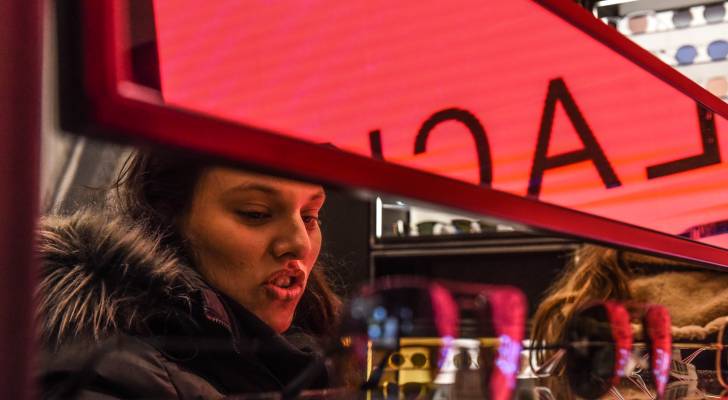
Whether you’re picking up your tried-and-true lipstick at the drugstore or just browsing for the perfect broad-spectrum SPF, you’ve probably crossed paths with L’Oréal.
The French beauty giant’s fingerprints are all over the makeup aisle — from budget buys to luxury staples. But what may have once been a harmless $10 splurge could soon make shoppers do a double take at the register.
Don’t miss
- I’m 49 years old and have nothing saved for retirement — what should I do? Don’t panic. Here are 5 of the easiest ways you can catch up (and fast)
- Thanks to Jeff Bezos, you can now become a landlord for as little as $100 — and no, you don’t have to deal with tenants or fix freezers. Here’s how
- Gain potential quarterly income through this $1B private real estate fund — even if you’re not a millionaire. Here’s how to get started with as little as $10
As part of President Trump’s ongoing trade war, the tariffs currently in place could have quite the impact on the beauty industry. On April 5th, most countries were hit with a baseline 10% tariff on goods entering the U.S., while imports from the European Union saw a 20% tariff — and Switzerland faces an even steeper 31%.
According to Cosmetics Design Europe, these kinds of trade moves could directly disrupt beauty brands that rely on global supply chains. L’Oréal, for example, still imports many of its most popular perfumes and skincare items from Europe — specifically France.
These shifting tariffs don’t just rattle companies like L’Oréal — they have the potential to shake up your beauty routine, too.
The tariff effect is more than just skin deep
L’Oréal is facing a tough call as tariffs loom over imported goods. Despite its sizable North American manufacturing footprint, many of the company’s bestsellers — like high-end skincare items and fancy fragrances — are still made in Europe. That puts the company squarely in the crosshairs of the 20% tariff on EU imports.
Nicolas Hieronimus, CEO of the French cosmetics brand, recently acknowledged that the U.S. market has proven to be tougher than L’Oréal expected heading into the year. Still, he told The Wall Street Journal that he expects the global beauty market to grow modestly around the lower end of the 4% to 4.5% range.
In 2024, L’Oréal reported solid, broad-based growth across its portfolio despite economic turbulence and shifting consumer habits. The company has a "multipolar model," which means L’Oréal isn’t overly reliant on any one market to keep business booming. Its stable of powerhouse brands — from budget favorites like CeraVe to luxury staples like Lancôme — allows the company to weather storms in one region while picking up momentum elsewhere.
Whether it’s your personal portfolio or a multinational brand, diversification is one of the ways to weather economic uncertainty. By spreading your assets — or your product offerings — across different sectors and regions, you’re not relying on a single stream of income to carry the load. That way, if one market takes a hit, the others can help balance the impact.
Read more: Want an extra $1,300,000 when you retire? Dave Ramsey says this 7-step plan ‘works every single time’ to kill debt, get rich in America — and that ‘anyone’ can do it
American beauty on a budget
L’Oréal’s luxury fragrances — including YSL’s MYSLF and Valentino’s Born in Roma — helped the beauty company beat expectations in Europe during the first quarter of 2025. But across the Atlantic it’s a different story, as North American sales dropped 3.8% in Q1.
It’s not that Americans have stopped buying beauty products altogether — they’re just getting a lot more strategic about it. On the BeautyGuruChatter subreddit, shoppers echoed the same sentiment. In a thread reacting to a YouTube video about rising beauty prices, users shared how they’re coping: skipping salon visits to trim their own bangs, swapping professional manicures for DIY nail kits and dyeing their hair at home.
But not everyone in the U.S. is panicking. Thanks to an overflowing market — with brands at nearly every price point — beauty lovers can still find affordable options without sacrificing quality. The key is to shop smarter, not harder. Stick to a budget before heading to the drugstore or your local Ulta and look for multi-use products that stretch your dollar further.
To stay ahead of the price hikes, check the label before you buy, as U.S. made products might hold their value better in the months ahead. Buying in bundles or subscribing to auto-ship deals can also help lock in today’s prices before any tariff-driven spikes hit the shelves.
What to read next
- Don’t have the cash to pay Uncle Sam in 2025? You may already be eligible for a ‘streamlined’ handshake with the IRS — here’s how it works and how it can potentially save you thousands
- Here are 5 ‘must have’ items that Americans (almost) always overpay for — and very quickly regret. How many are hurting you?
- Robert Kiyosaki warns of a ‘Greater Depression’ coming to the US — with millions of Americans going poor. But he says these 2 ‘easy-money’ assets will bring in great wealth. How to get in now
This article provides information only and should not be construed as advice. It is provided without warranty of any kind.